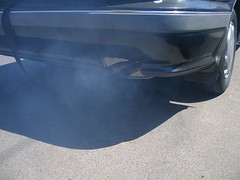President Obama taps John Porcari, Secretary of the Maryland Department of Transportation, to serve as the next Deputy Secretary of the U.S. Department of Transportation.
(Source: Washington Post & AASHTO)

Maryland Secretary of Transportation John D. Porcari has been tapped to join the Obama administration. (Photo by Post)
John Porcari, Secretary of the Maryland Department of Transportation, is President Barack Obama’s choice to become the next Deputy Secretary of the U.S. Department of Transportation.
Maryland’s secretary of transportation John D. Porcari will serve as Ray LaHood‘s deputy if confirmed by the Senate. He first served as Maryland’s transportation chief from 1999 to 2002, leading the development and construction of two high-profile transportation projects in the greater Washington region. He led the planning and start of the Intercounty Connectorbetween Montgomery and Prince Georges County, Md., and the development and funding to reconstruct the Woodrow Wilson Bridge, a critical piece of Washington’s infamous Beltway that connects Maryland with Virginia. In between two tours of duty at Maryland DOT, he served as the chief administrative and financial officer at the University of Maryland.
In his current position, Mr. Porcari is responsible for motor vehicle registration and the highway, transit, aviation, and maritime modes of the state’s transportation system. Mr. Porcari also serves as chairman of the entity responsible for operating the state’s bridge and tunnel facilities. He’s in his second tour as Secretary, having previously served in this capacity from 1999 to 2002.







